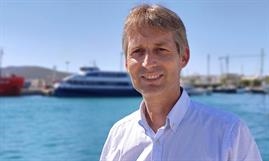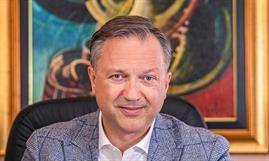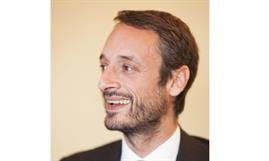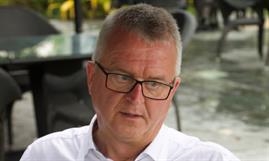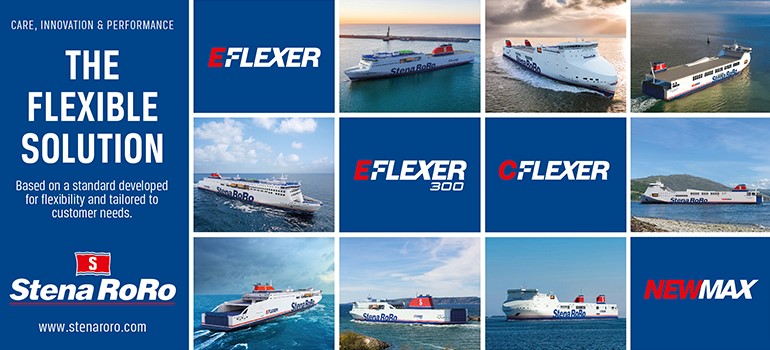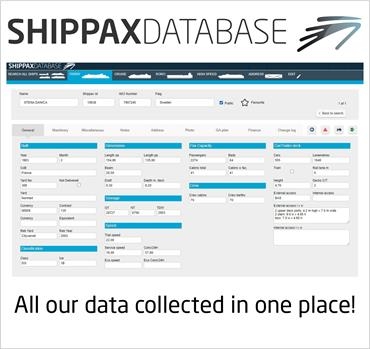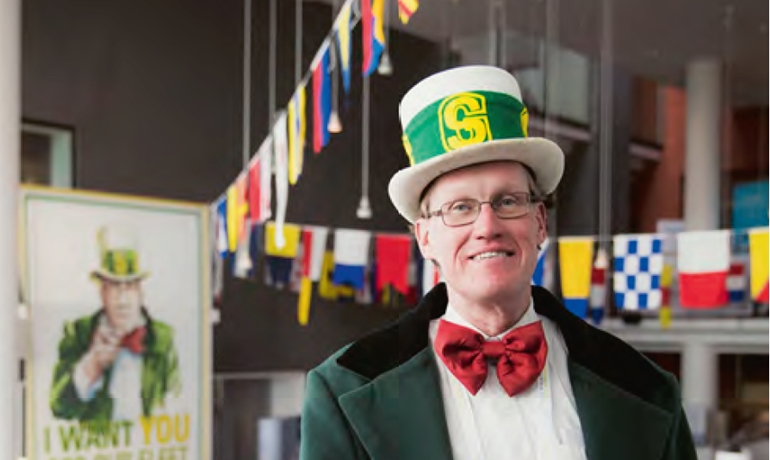
Dan Mikkola © Therese Andersson
Quick Q&As – Dan Mikkola
InterviewThis interview with Dan Mikkola, Managing Director at Godby Shipping, was first published in the September 2019 issue of our monthly magazine Shippax Info.
“WE ARE CONFIDENT IN THE FUTURE OF THE 1,600-2,500-LANEMETRE RO-RO MARKET”
Name: Dan Mikkola
Position: Managing Director
Age: 53
Zodiac sign: Sagittarius
Civil status and family: Divorced, with three children and a dog
Place of birth: Finstrom, Finland
Could you very briefly describe the history of Godby Shipping and the role of your family in the company.
Godby Shipping is a family-owned company, established in 1973. Our aim is to offer high-class, tailor-made sea transportation service to the forest industry and liner operators. We operate a fleet of seven ro-ros under Finnish flag. The vessels are currently employed on time charter to Stena, TransProCon, P&O Ferries, CMA CGM, and UPM-Kymmene. Since the year 2000 the company has been run by a second generation [of management team], with myself as managing director and my sister Eva Mikkola-Karlström as deputy managing director.
You are a tonnage provider with a mixed ro-ro fleet of both small- and medium-size ships. Not many small-scale family-owned companies like yours are still in the business. How do you keep pace with the ‘big boys’?
The long-term question is if there will be a market for independent tonnage providers in the ro-ro segment. We have no clear-cut answer to this, but we firmly believe that the flexibility offered by independents is good for the overall market situation.
Small is beautiful. What are the strengths of a company like Godby Shipping?
Our strengths lie in offering a long-term and customer-focused quality service to our clients.
Are all your seven ships managed and manned by Godby Shipping?
Yes, managing the vessels is the core of what we do. Outsourcing the management is thus not something we would consider. We as a family company want to be in control and take full responsibility for what we do.
Together with Knud E. Hansen, you developed a new generation of ro-ro freighters. The initial design boasted a 3,500-lanemetre intake. A 5,000-lanemetre version was also conceived. The newbuilding plans were eventually shelved because you didn’t secure a long-term charter. What is the situation concerning this project today? The average age of your fleet exceeds 23 years and the average lanemetre capacity is about 1,500 lanemetres. Maybe these issues need to be addressed sooner rather than later?
There is unfortunately no movement on our ‘Next Gen RoRo’ project and we are not building new ships without charter cover. It is clearly a disappointment that we have not succeeded in building new ships after MISANA and MISIDA back in 2007. Planning the next generation of ships is definitely the number one priority for us.
You were eyeing economy-of-scale tonnage. How do you see the market for smaller ro-ros of the 1,600- to 2,500-lanemetre range? Will they disappear from Northern Europe, as the mega ro-ros gradually taking over?
In the short term, in the next 2-3 years, there might be an over-supply of both the mega ships of 5,000 plus lanemetres and the former workhorses of around 4,000 lanemetres. In a long term, it is more difficult to say how the market will adjust to the new, big ro-ros. We clearly feel that smaller ships will be needed. Not all lines will need ships of 5,000 plus lanemetres and not many smaller ships have been built in the last 15 years. We are therefore confident in the future of the 1,600-2,500-lanemetre ro-ro market.
What about the model of smaller ro-ros offering a higher frequency of departures rather than mega vessels offering a lower frequency?
I’d like to refer you to the answer above.
The recent joint venture between SOL and Wallenius means a further consolidation of the Baltic forest product transport market. How will this process go? Do you see other Swedish forest product companies, such as SCA and Holmen, follow suit?
I think the trend is for the forest industry to increase the use of liner services at the expense of dedicated transport systems. But this does not mean that all forest companies will go for liner service. I could, for example, see at least SCA and UPM-Kymmene committing to their own sea transport systems long into the future.
Godby Shipping is very visible during the annual Åland Maritime Day. How important is the Åland maritime community to a company like yours?
Having a high profile and being heavily involved in the Maritime Day is a strategic decision for us. We feel that the shipping cluster on Åland is important for the future success of our company.
What do you love about your job?
The challenges of offering good service to a variety of clients from different countries and segments of the ro-ro market.
What are your favourite pastime activities?
Spending time with my children, reading, physical exercises, and helping out with IFK Mariehamn, the local football club.
What was your childhood dream job?
Being an airline pilot.
What is your favourite destination for a city trip?
Big cities in southern Europe. This year’s destination was Istanbul – a fantastic place.
What music do you like?
David Bowie, mainly his albums from the early 70s.
What is your favourite dinner and drink combination?
If I make it myself, lasagne and a good red wine.
sep 01 2019
Most read
Carnival Corporation full-year results
dec 21 2025
Not a Merry Christmas for CMAL and CalMac as two newbuilding ferries – GLEN ROSA and ISLE OF ISLAY - are further delayed
dec 22 2025


